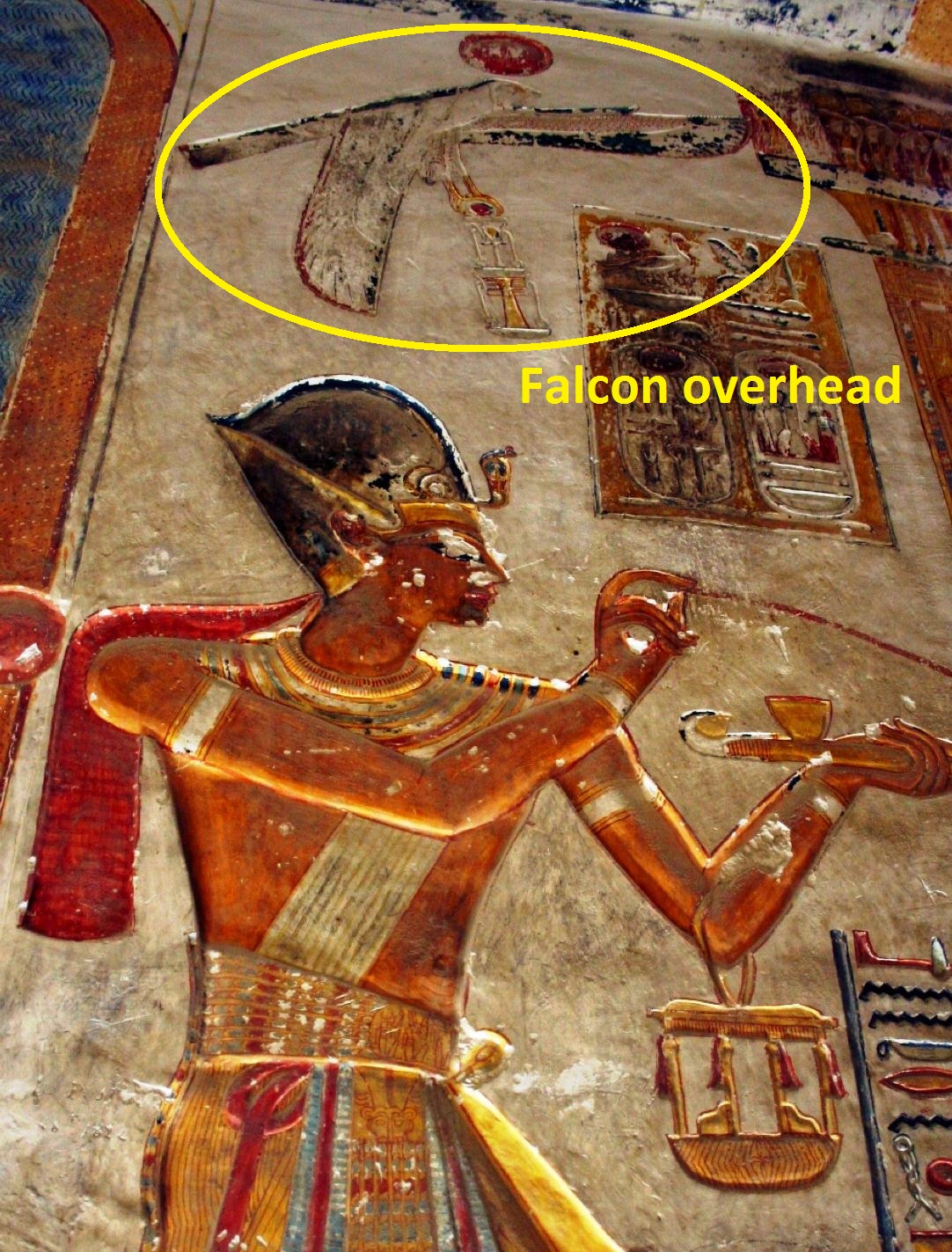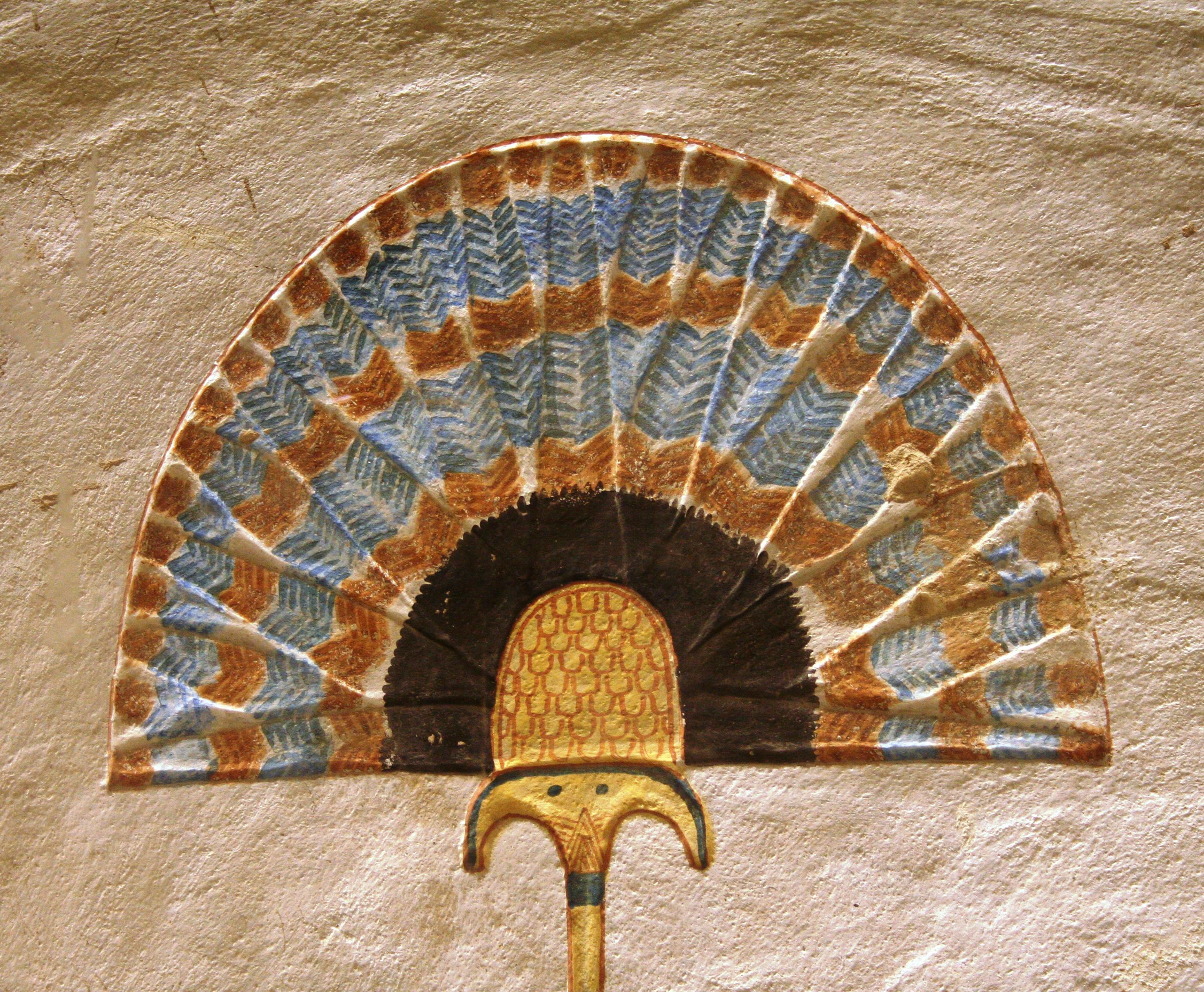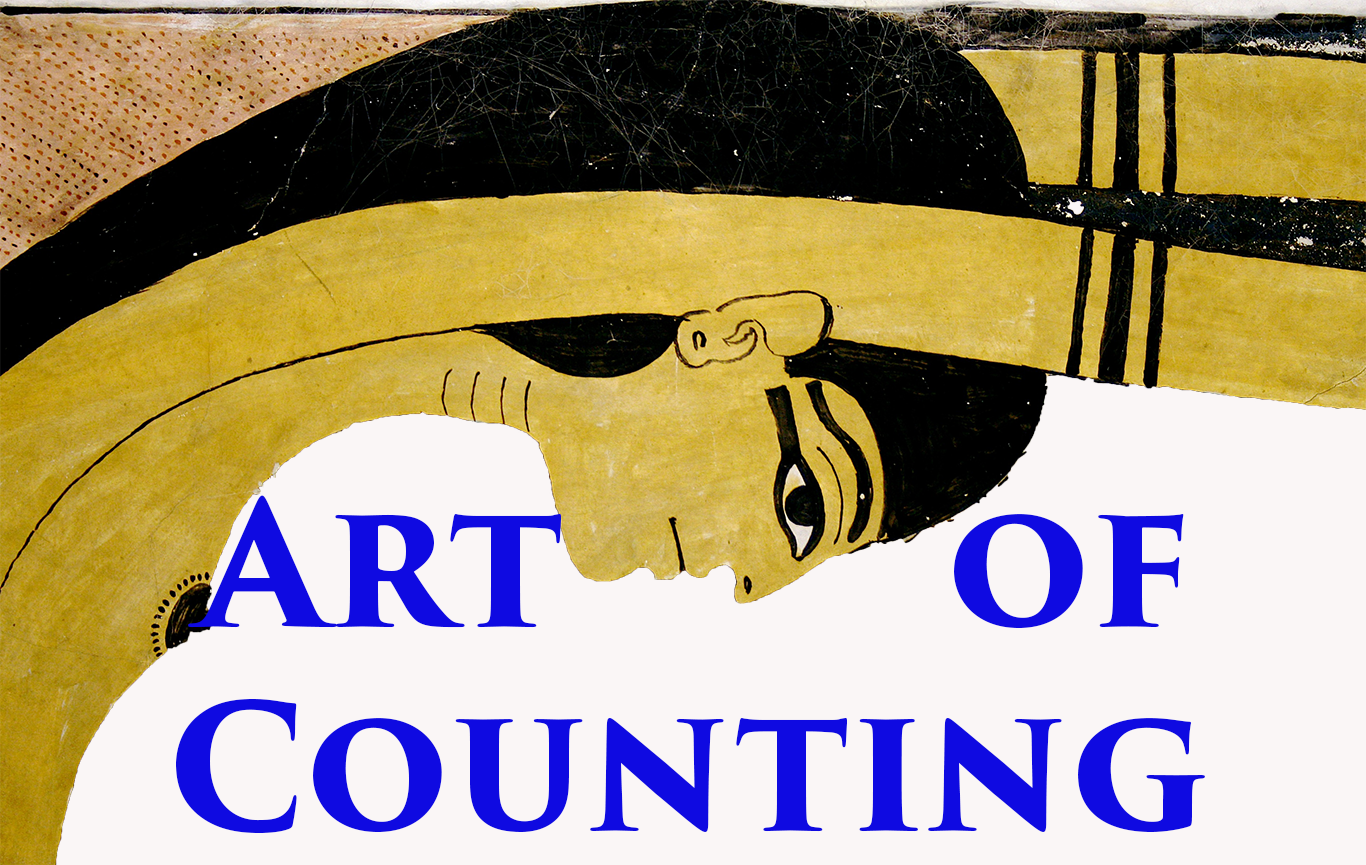
by Art of Counting | Variable of the Day
Temple of Ramses III at Medinet Habu NOTE: These offerings depict the king before a deity presenting various types of bouquets. They imply regeneration and and fecundity. According to the analysis of offering scenes at Medinet Habu, they tend to be presented to...

by Art of Counting | Variable of the Day
Tomb of Ramses VI (KV 9) NOTE: Falcons, like discs and vultures, are often depicted hovering over the kin’g head. They shield pharaoh from harm and also bestow various gifts. In the above instance, the unidentified falcon extends to the king a shen sign...

by Art of Counting | Variable of the Day
Tomb of Khaemwaset (QV 44) NOTE: The sunshade, unlike the khu fan, appeared early in Egypt’s history. They appear on both the Narmer macehead and that of King ‘Scorpion’ (Oxford, Ashmolean Museum E 3631 and 3632). This emblem is generally seen as signifying a...

by Art of Counting | Variable of the Day
Tomb of Khaemwaset (QV 44) NOTE: The khu-fan does not appear until the middle of the Eighteenth Dynasty, during the reign of Amenhotep II. It is described as a ceremonial fan and was often carried by high-status officials who bore the title ‘fanbearers on the right...

by Art of Counting | Variable of the Day
Tomb of Khaemwaset (QV 44) NOTE: This tight-fitting crown was known from probably the Old Kingdom (these examples may represent close-cropped hair rather than a cap) and certainly the Middle Kingdom, although it was not terribly common. It appeared on the heads of...

by Art of Counting | Variable of the Day
Temple of Ramses III at Medinet Habu NOTE: This variable covers the action of the primary individual being led–whether pharaoh or, in private tombs, the deceased. The king is regularly shown in temple relief being led by one or a pair of deities (often Montu,...







